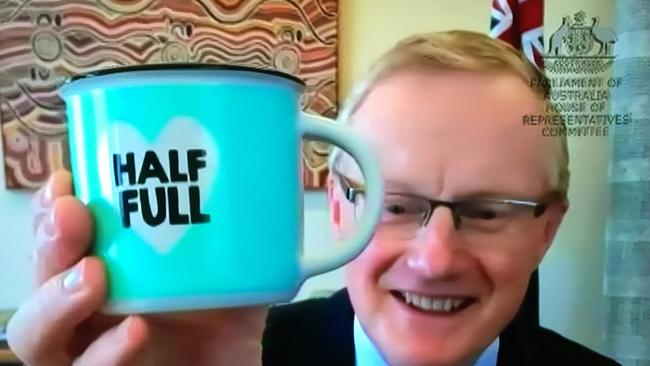Delicate housing balance for Reserve Bank of Australia

Figures from the Australian Prudential Regulation Authority on Tuesday showed that debt was at least six times greater than income in 21.9 per cent of new home loans in the June quarter – a big jump from 16.3 per cent in the September quarter last year.
It’s never a good idea to rely on a single batch of data to advance a policy agenda in the $1.9 trillion mortgage market, given its critical economic and political importance.
For example, a recent review by Macquarie Research of credit trends in July concluded that the risk of regulatory intervention had eased, not grown, because housing credit growth across the major banks, excluding the troubled ANZ business, moderated to an annualised rate of 6-7 per cent from double-digits in June.
Macquarie attributed this to half the country being in some kind of lockdown.
The point is that determining the right policy prescription for the housing market continues to require a delicate balance of considerations by regulators, which appear to be more focused on macro rather than prudential policy measures to keep things on an even keel.
Given the high level of uncertainty, forecasts about the timing of intervention are a bit rubbery.
ANZ senior economist Felicity Emmett, who previously predicted a move before the end of the year, now believes the first half of next year is more likely, probably in the first quarter.
The reason for the change is the economic impact of the more infectious Delta variant, with Reserve Bank governor Philip Lowe encapsulating those concerns on Tuesday as he announced the cash rate would remain on hold at 0.1 per cent.
While Delta was expected to “delay but not derail” the recovery, he said the timing and strength of the recovery was uncertain and likely to be slower than the bounce back earlier in the year.
Lowe last addressed the issue of macroprudential controls in July, saying he didn’t see the need at that point to move on any of three policy options.
They included lifting the 2.5 per cent buffer on the mortgage rate to determine serviceability, targeting high loan-to-valuation ratios, and targeting high debt-to-income ratios.
The governor said credit growth had picked up and was running at 6-7 per cent, and was likely to further increase.
Australia, however, already had a high level of household debt, and it wasn’t in the country’s best interests to have debt growing at a “much, much quicker rate” than wages.
“So if we saw a large and sustained gap in household credit growth relative to income growth, we’d be looking at various policy responses to deal with that,” Lowe said.
“At the moment we don’t see a problem here – household debt growth is higher than income growth but not massively higher.
“But if we get a situation where household debt is growing much, much quicker than income and it looks as though it’s going to be sustained, you can expect us to be exploring options a bit more aggressively than we are now.”
Ultimately it was a decision for APRA.
The prudential regulator updated its guidance on residential mortgage lending, also in July, saying it no longer expected banks to assess home loan applications using a minimum interest rate of at least 7 per cent.
Instead, banks would be able to set their own interest rate floor for their serviceability assessments and use a revised buffer of at least 2.5 per cent.
APRA told the banks in a letter that its previous guidance had served its purpose in limiting excessive borrowing in an environment of low interest rates and high household debt.
However, changes in the market – in particular continuing, ultra-low rates and the introduction of differential pricing for mortgage products, undermining the case for a uniform interest-rate floor – had led the regulator to review its guidance.
Hindsight is a wonderful thing, but if APRA had its time again and knew what it does now, it would probably have introduced a larger buffer than 2.5 per cent.
Macquarie has previously estimated that a 50 basis point increase in the buffer would shrink the maximum borrowing capacity of a customer by 5-6 per cent.
It sounds like the right sort of outcome in the circumstances, even if Lowe says he doesn’t see a problem.
Retail payments down
Retail payments data in the month of July, also released by the Reserve Bank on Tuesday, highlights the impact of lockdowns on the nation’s two biggest states – NSW and Victoria.
Payments by credit cards, debit cards and ATMs all fell sharply compared to June.
Credit card transactions by value dipped $2.42bn, or 8.8 per cent, to $27bn, and debit cards dropped $3.1bn, or 8.3 per cent, to $33.4bn.
ATMs resumed their customary downward spiral, shedding $770m, or 9 per cent, to $7.5bn.
Industry consultant and former head of Diners Club in Australia and New Zealand, Grant Halverson, said the notable thing about the figures was the downturn in debit cards, which normally reported double-digit growth.
The slide in July therefore amounted to a turnaround of about 18 per cent.
“Consumer spending has clearly been slowing quite significantly, and the turnaround has been quite abrupt,” Halverson said.
ATM and cash usage, on the other hand, has been in long-term decline.
gluyasr@theaustralian.com.au
Twitter: @Gluyasr



A sharp increase in mortgage lending at high debt-to-income ratios is the latest argument in favour of macroprudential controls to rein in the housing boom.